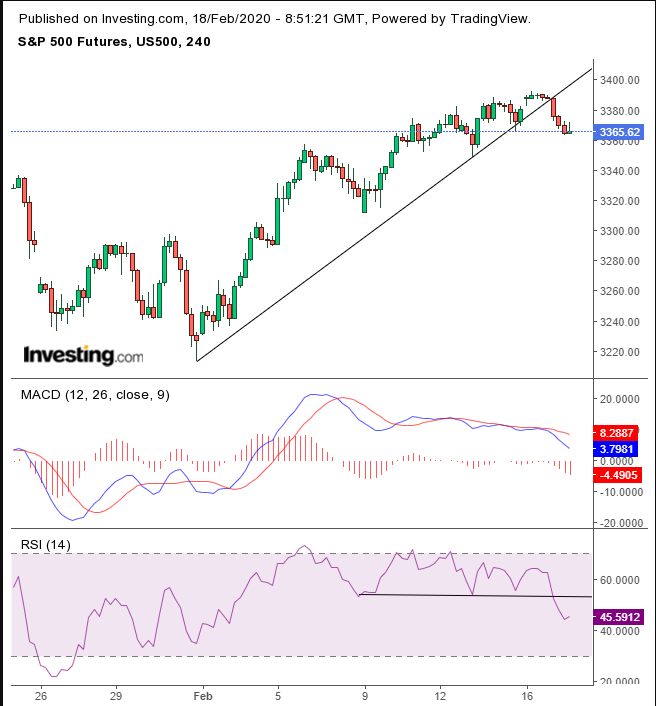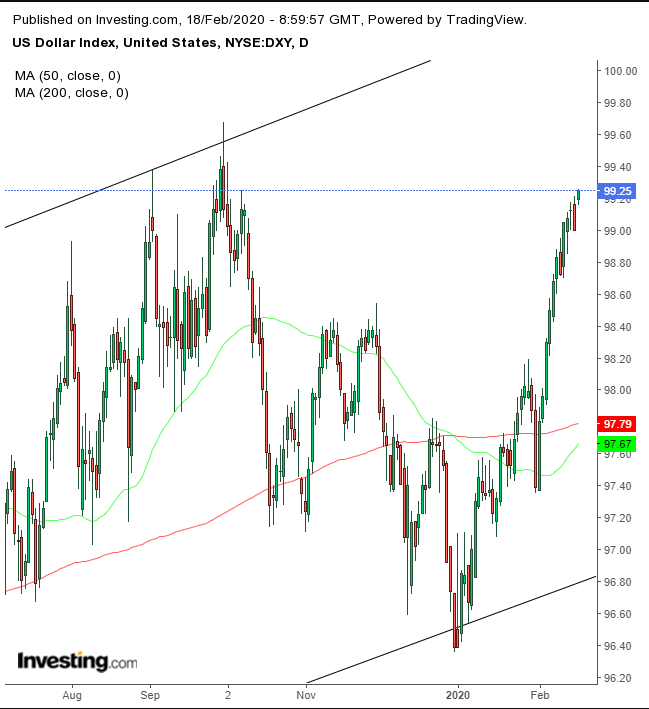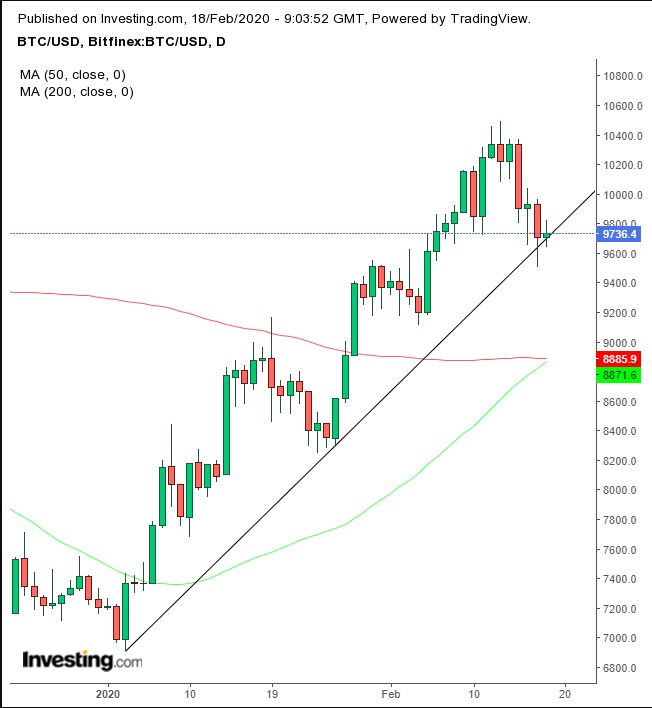Key Events
Contracts on U.S. indices, including for the NASDAQ, Dow and S&P 500, all fell this morning, in tandem with global stocks, after Apple (NASDAQ:AAPL) warned it won’t be able to meet its quarterly revenue targets for March.
The reason for the miss: knock-on effects from the coronavirus' impact on China's workforce and economy, where some of the Cupertino, CA-based company's key suppliers—and customers—are located. Many companies throughout the Asian country remain closed as workers, and consumers, remain at home, in order to quarantine the spread of Covid-19.
The news likely also provided last week's exuberant traders with a somewhat bitter reality check on the heels of the U.S.'s Presidents' Day holiday, by making more tangible the economic fallout of the still uncontained pandemic.
Treasurys and gold jumped.
Global Financial Affairs
Futures for the S&P 500 dropped on Tuesday.

They fell below its uptrend line since the Jan. 31 bottom, with both the RSI and MACD providing sell signals.
The STOXX Europe 600 Index also slumped, with Apple suppliers Dialog Semiconductor (DE:DLGS) and Infineon Technologies (DE:IFXGn) selling off. In addition, HSBC (LON:HSBA) and Glencore (LON:GLEN) each warned of the negative impact of the virus.
In Asia, Japan’s Nikkei 225, South Korea’s KOSPI and Hong Kong’s Hang Seng were all sold off. The Asian benchmarks each lost over 1%. Ironically, China’s Shanghai Composite was flat, presumably because of massive government accommodation with promises for more ahead.

U.S. 10-year yields dropped to their lowest level since Feb. 3 this morning, as investors were unable to shift to Treasurys during yesterday’s holiday when Wall Street was closed.
The dollar reached the highest since Sept. 30 thanks to today's rush into Treasurys.

The USD has been trading within a rising channel since June 2018. As well, the 50 DMA is setting up to cross back above the 200 DMA.
Despite the dollar's strength, the yen climbed.

Gold moved higher for a fifth day, extending an upside breakout to a continuation pattern, with a promise to climb further, to $1,655.

Bitcoin is struggling against its uptrend line since the January low, as the 50 DMA attempts to cross over the 200 DMA to trigger a golden cross.
Oil traders appear to be unable to find buyers, now that Chinese business operations have slowed or ceased altogether. As the world’s largest importer of the commodity, the fall-off has been a major hit to the market. Traders are beginning to hire supertankers to store oil for later delivery.

The price developed a bearish pattern at the $52 support-resistance line since late January, suggesting a return toward $49, the lowest level for the commodity in a year.
Up Ahead
- Earnings season rolls on, with results on Tuesday from Walmart Inc (NYSE:WMT); Deere & Company (NYSE:DE) reports on Friday.
- UK CPI and U.S. Building Permits will be released on Wednesday. Minutes of the most recent Federal Reserve will also be published.
- Indonesia is expected to cut interest rates on Thursday, following emerging-market peers that have already done so.
- G-20 finance ministers and central bank chiefs are scheduled to meet Feb. 22-23 in Riyadh, Saudi Arabia, where they're expected to discuss efforts to support growth amid the coronavirus threat.
Market Moves
Stocks
- The Stoxx Europe 600 Index sank 0.4%.
- Futures on the S&P 500 Index dipped 0.3%.
- The MSCI All-Country World Equity Index declined 0.2%.
- The U.K.’s FTSE 100 slumped, down 0.65%.
Bonds
Currencies
- The Dollar Index was flat.
- The euro was little changed at $1.0829.
- The British pound decreased 0.1%.
- The Japanese yen appreciated 0.1% to 109.77 per dollar.
